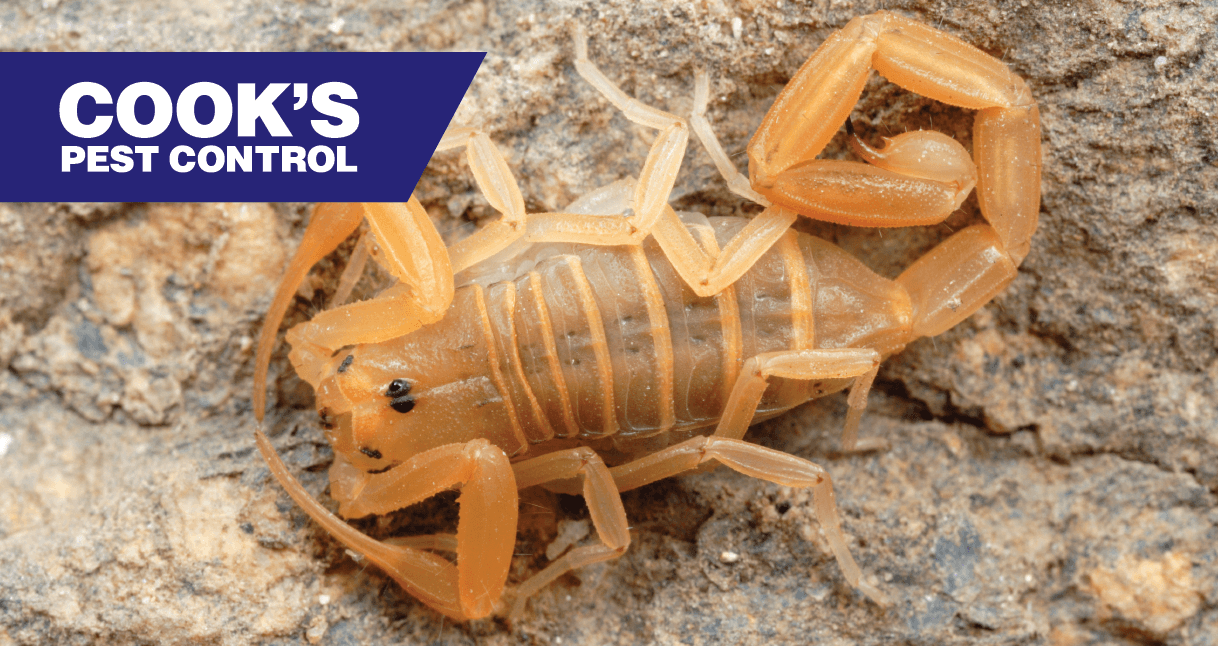Pest Profile: Southern Devil Scorpion

The Devil in the Sand
Scorpions are an arachnid that we commonly deal with in the pest control industry. They are closely related to spiders and can be found on every continent except Antarctica. There are more than 1,500 scorpion species worldwide, but only about 25 of those species have venom strong enough to kill a human. Scorpions often blend into the environment in which they are residing, hiding under logs, mulch, loose bark, stones, etc. The average scorpion is about 2-2.5” long; however, the longest recorded length for a scorpion measured about 8” long. Unlike insects, scorpions give birth to live young. They will give birth to between 20-100 babies which are born with a soft exoskeleton (outer shell). These soft little scorpions will crawl on the mother’s back for protection until their exoskeleton hardens. In the southern United States, one scorpion that we commonly encounter is the Southern Devil Scorpion. The Southern Devil Scorpion (Vaejovis carolinianus) is also referred to as the Southern Unstriped Scorpion. These scorpions are skittish, easily scared, and usually prefer to run from danger as much as possible. Overall they are considered medically unimportant. This scorpion is found in most of the Appalachian states – Kentucky, West Virginia, North and South Carolina, Georgia, Alabama, Mississippi, Louisiana, and Tennessee.
Scorpions are in the class Arachnida, which means that, unlike insects, they have eight legs. These scorpions are uniformly brown and 1-1.5” in length when full grown. These scorpions are normally found outside hiding under logs, loose bark, or loose stones on the ground. They are predatory arachnids that eat small spiders and insects. Unlike some scorpions that can survive in a very dry environment, these scorpions rely on moisture and hide in moist habitats where they can find their prey. Scorpions have clever ways of wandering into homes because they are able to fit into spaces as small as 1/8″. Because of their affinity for moist environments, they are usually found in more humid places around the house such as bathrooms, kitchens (near the sink), and laundry rooms. If they have sufficient food and water, they may survive or even thrive indoors. However, in most cases, they will die of dehydration and starvation.
These scorpions are nocturnal and shy, so when they are in a home, they are typically not interested in stinging. For any scorpion, it takes a significant amount of energy for them to sting. They would have to feel highly threatened to be persuaded to sting. These little guys are more likely to die in your home than sting you, so there’s little reason to worry about them. The best way to prevent these critters from getting inside is to ensure that you have sealed any unnecessary openings or plumbing fixtures. If you begin to see these critters, inspect with garden gloves as hand protection, and try to eliminate any entry points through which they could be sneaking into your home.
Kristen Stevens, BCE
